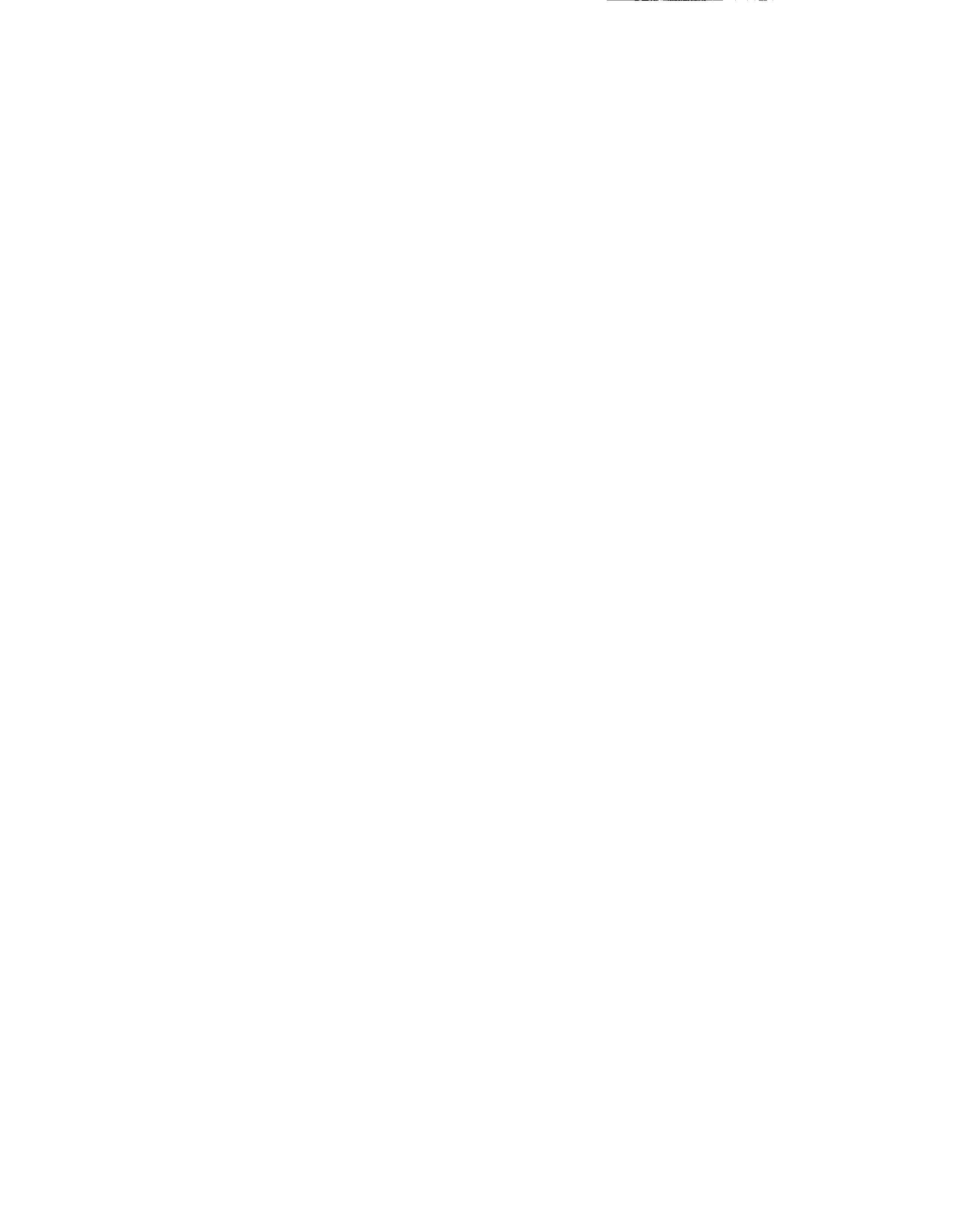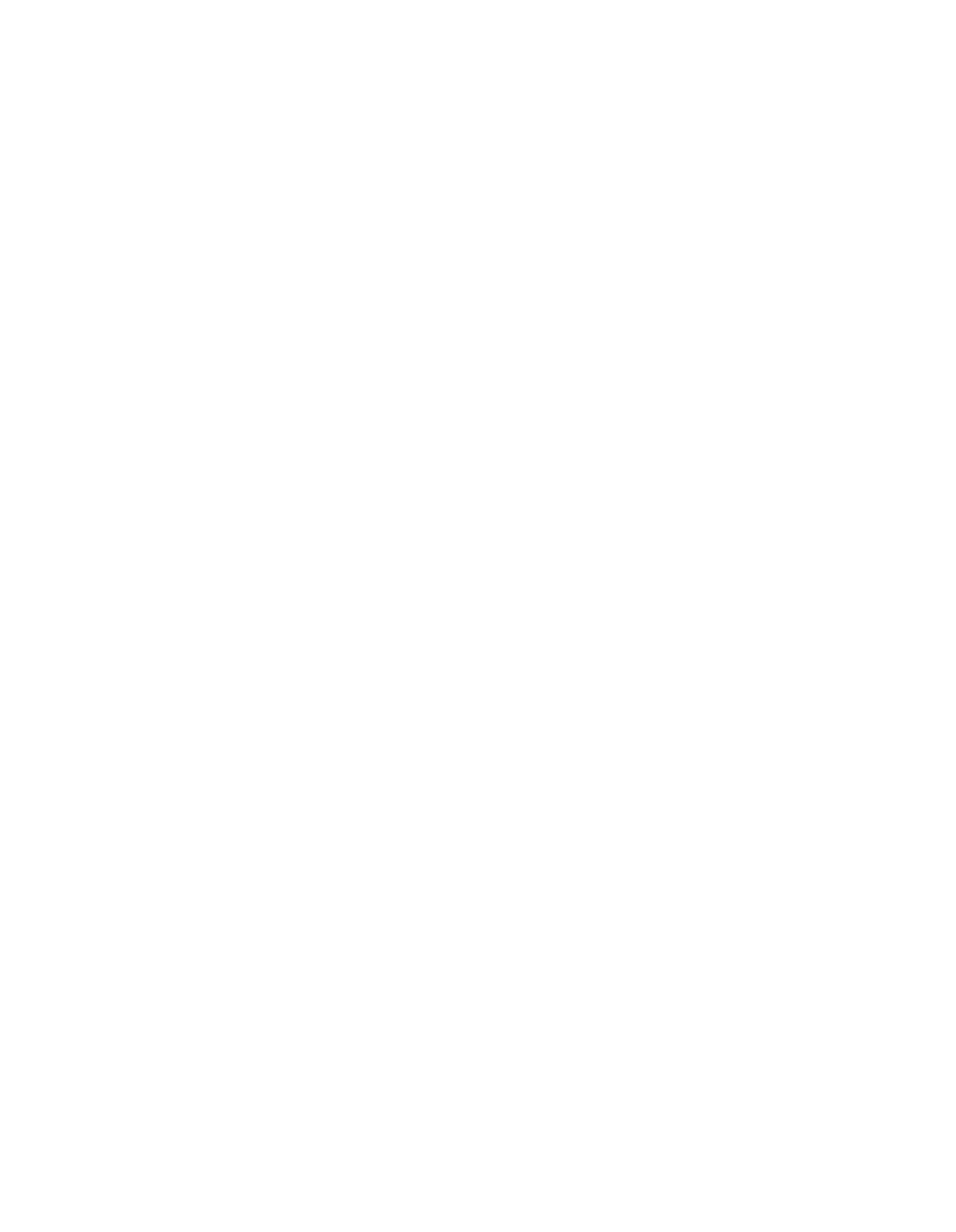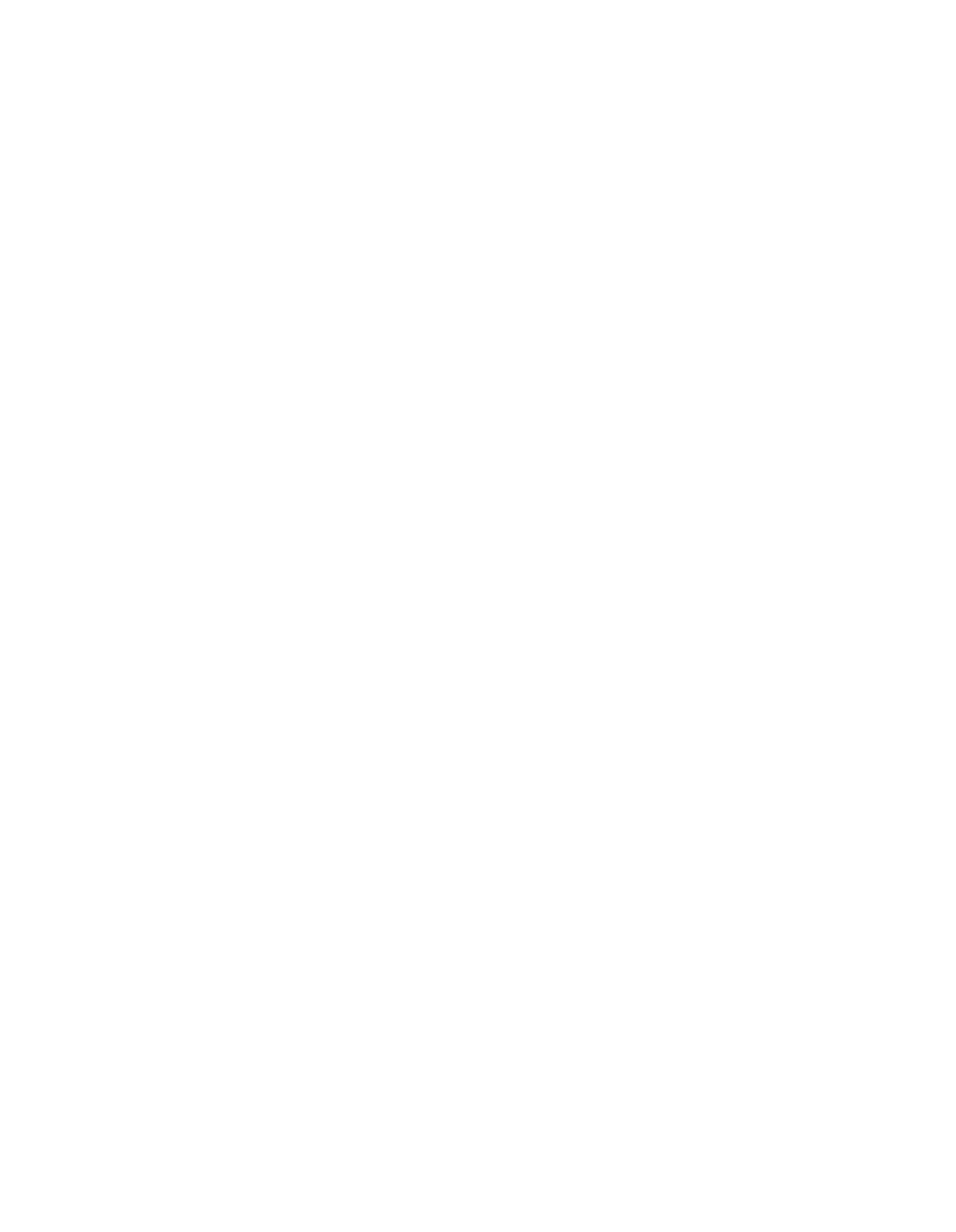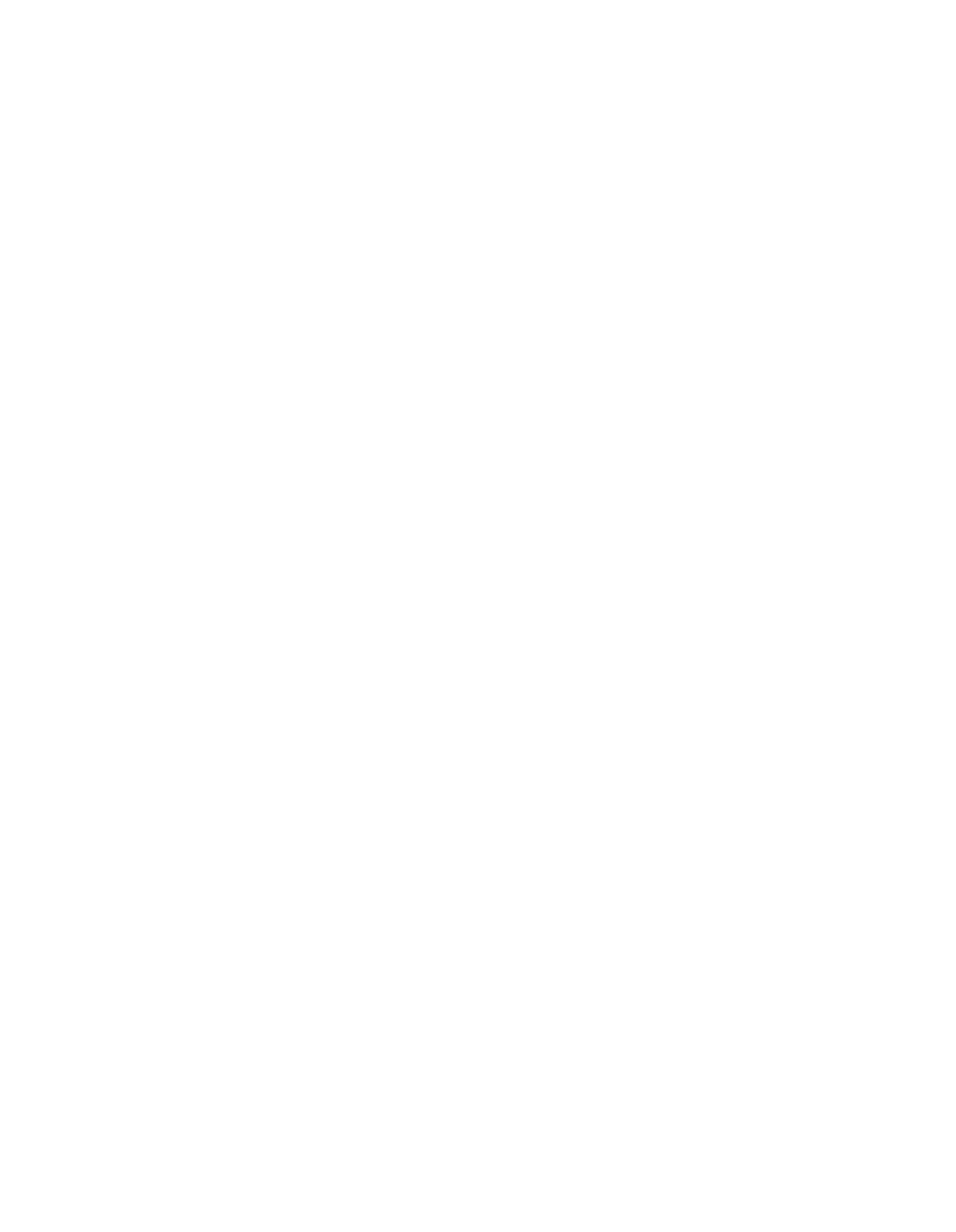ORIGINAL
1
POLLUTION
CONTROL
BOA~CEIVED
CLERK’S OFFICE
2
MAY
17
200k
STATEOF ILLINOIS
Pollution Control
Board
IN THE MATTER
OF:
5
CLEAN-UP
PART
III AMENDMENTS
)
R04-20
6
TO 35
ILL.
ADM.
CODE
PARTS
)
(RULEMAKING
)
-AIR)
7
211,
218,
AND
219
)
8
9
IN THE MATTER
OF:
10
TECHNICAL
CORRECTIONS
TO
)
R204-12
FORMULAS
IN 35
ILL.
ADM.
)
(RULEMAKING
11
)
-
AIR)
CODE
214
“SULFUR
LIMITATIONS
)
12
(CONSOLIDATED)
13
DATE:
Wednesday,
Thursday,
May
6,
2004
14
TIME:
1:30
PM
15
PLACE:
Illinois
Pollution
Control
Board
16
Hearing
Room
1021
N.
Grand
Avenue
East.
17
Springfield,
Illinois
18
19
20
21
Kimberly
A.
Ganz,
CSR,
RPR,
RMR,
CRR
IL
Lic.
#084-001691
22
MO Lic.
#721
23
24
JO ELAINE
FOSTER
& ASSOCIATES,
P.C.
(618)
877-7016
F:
(618)
655-0660
2
1
APPEARANCES:
2
MR.
RICHARD
R.
McGILL,
JR.
HEARING
OFFICER
3
SENIOR
ATTORNEY
FOR RESEARCH
& WRITING
ILLINOIS
POLLUTION
CONTROL
BOARD
4
100
W.
Randolph
Street
James
R.
Thompson
Center,
Ste.
11-500
5
Chicago,
IL
60601
6
MR.
NICHOLAS
J.
MELAS
7
BOARD
MEMBER
ILLINOIS
POLLUTION
CONTROL
BOARD
8
100
W.
Randolph
Street
James
R.
Thompson
Center,
Ste.
11-500
9
Chicago,
IL
60601
10
MS.
ANDREA
S.
MOORE
BOARD
MEMBER
11
ILLINOIS
POLLUTION
CONTROL
BOARD
100
W.
Randolph
Street
12
James
R.
Thompson
Center,
Ste.
11-500
Chicago,
IL
60601
13
MR.
ANAND
RAO
14
BOARD
MEMBER
ILLINOIS
POLLUTION
CONTROL
BOARD
15
100
W.
Randolph
Street
James
R.
Thompson
Center,
Ste.
11-500
16
Chicago,
IL
60601
17
MR.
CHARLES
E.
MATOESIAN
ASSISTANT
COUNSEL
18
ILLINOIS
ENVIRONMENTAL
PROTECTION
AGENCY
1021
N.
Grand
Ave
East
19
Springfield,
IL
62794-9276
20
MS.
LaDONNA
DRIVER
HODGE
DWYER
ZEMAN
21
3150
Roland
Ave.
Springfield,
IL
62705-5776
22
23
24
JO ELAINE
FOSTER
& ASSOCIATES,
P.C.
(618)
877-7016
F:
(618)
655-0660
3
1
HEARING
OFFICER:
Good
afternoon,
2
welcome
to
the Illinois
Pollution
Control
3
Board.
My name
is Richard McGill
and I’m
4
the hearing
officer
for this board
5
proceeding.
For purposes
of
the hearing,
6
the board
has consolidated
two rulemaking
7
proposals.
Docket
R04-12
is
a board
8
initiated
rulemaking
proposal
to amend
air
9
enforcement
rules.
That rulemaking
is
10
captioned
Technical
Corrections
to Formulas
11
in 35
Illinois Administrative
Code
214,
12
sulfur
limitations.
13
The second rulemaking
proposal
is
in
14
docket
R04-20.
That
was
filed by the
15
Illinois
Environmental
Protection
Agency.
16
The rulemaking
is captioned
Clean-up
Part
17
III Amendments
to
35 Illinois
18
Administrative
Code,
parts
211,
218
and
19
219.
20
Today
is the second hearing.
We had
21
our first
hearing
in Chicago
on March
18.
22
No other hearings
are currently
scheduled
23
in this consolidated
rulemaking.
Also
24
present
today
on behalf
of the board
to my
JO ELAINE FOSTER
& ASSOCIATES,
P.C.
(618)
877-7016
F:
(618)
655-0660
4
1
far left board member Nick
Melas;
to my
2
immediate
left Andrea Moore;
and
to my
3
right
Anand
Rao who
is
the head of the
4
board’s
technical
unit.
And
I
see also
5
Alisa Liu
of our technical
unit
is
in the
6
audience.
7
Today’s proceeding
is governed
by the
8
board’s procedural
rules.
All
information
9
that
is relevant
and not repetitious
or
10
privileged
will
be admitted
into
the
11
record.
We
are going
to begin with
the
12
agency’s
testimony
on P.04-20
in response
to
13
questions
raised
at
the first
hearing.
14
That testimony
will be followed
by any
15
further
questions
of the board
or members
16
of
the public may have
for the agency on
17
R04-20.
After
that,
anyone
else may
18
testify
in R04-20
or R04-l2.
Those
who
19
wish
to testify will be
sworn
in and may be
20
asked questions
about
their
testimony.
21
After
that,
if anyone has any questions
on
22
the board
initiated
rulemaking
proposal
in
23
R04-12,
they can state
those
on the record
24
for
the board
to
later
consider.
JO ELAINE FOSTER
& ASSOCIATES,
P.C.
(618)
877-7016
F:
(618)
655-0660
5
1
Then we will
take
up the Department
of
2
Commerce
and Economic
Opportunity’s
3
decision
not
to conduct
an economic
impact
4
study
on either
of
these
rulemaking
5
proposals.
We will
conclude
with
a
few
6
procedural
items.
I would ask for the
7
Reporter’s
benefit,
she’s
transcribing
our
8
comments
today
so please
speak
slowly
and
9
don’t
talk over one another
so we get
a
10
nice
clean,
clear
transcript
for the board
11
to review.
12
Are
there
any questions
about
the
13
procedures
that
we will
be following?
I
14
would
ask the Reporter
if you would
go
15
ahead
and swear
in the
Illinois
16
Environmental
Protection
Agency’s
17
witnesses.
18
(Witnesses
sworn.)
19
HEARING
OFFICER:
Thank
you.
I’m
20
going
to turn
it over now
to Agency
21
Attorney
Charles
Matoesian.
22
MR.
MATOESIAN:
Thank
you.
Ladies
and
23
gentlemen,
my name
is Charles
Matoesian.
24
I’m appearing
for the Illinois
JO ELAINE FOSTER & ASSOCIATES,
P.C.
(618)
877-7016
F:
(618)
655-0660
6
1
Environmental
Protection
Agency.
This
is
2
the second hearing
on amendments
to 357
3
Illinois
Administrative
Code parts
211,
218
4
and 219.
I will briefly
discuss
the
5
purpose
of
these
amendments.
6
These
are simply
a clean-up
of
7
existing
regulations
which result
from
8
discussions
with
the United States
9
Environmental
Protection
Agency and
10
industry
and which
will
reduce
the burden
11
of complying
with
certain provisions
and
12
increase
the flexibility
for complying
with
13
certain
other provisions.
14
Originally
the
subparts
at issue
were
15
adopted
to satisfy
the
Clean Air Act
16
requirements.
The
amendments
generally
17
clarify
existing
regulatory
provisions
with
18
the goals
of reducing
the burdens
of and
19
affording
greater
flexibility
in
20
demonstrating
compliance.
The amendments
21
are admission
neutral
and do not impact
the
22
overall
plans
or goals
of
the Chicago
area
23
or Metro
East ozone
area.
24
With me
is
Mr.
Gary Beckstead
and
JO ELAINE FOSTER
& ASSOCIATES,
P.C.
(618)
877-7016
F:
(618)
655-0660
7
1
Mr.
David
Bloomberg.
They are both EPA
2
protection
engineers
in the air quality
3
planning
section
of the Bureau
of Air.
4
They will
testify
at greater
length
about
5
most
of
the
changes
and questions
that were
6
asked
at the prior hearing.
I would
just
7
like
to clarify
one thing.
There
were
8
several
questions
concerning
a provision
in
9
218
and parallel
219.
105(c) (2)
about
in
10
particular
the very
last
statement,
in
11
enforcement
cases,
LCL cannot
be used
to
12
establish
compliance.
Sufficient
tests
13
must
be performed
to satisfy
the
DQO.
Last
14
two sentences
I should
say.
And did those
15
have an evidentiary
effect.
They were not
16
intended
for any such effect.
They were
17
taken
from
a guidance
memo
issued by the
18
United
States
Environmental
Protection
19
Agency.
The purpose
of
the agency was
20
merely
to alert
owners
and operators
as
to
21
what
type
of information
and testing
they
22
would
be expected
to take,
and looking
at
23
the original
memo,
we notice
that
it
24
actually
uses
the advisory
terms
should not
JO ELAINE FOSTER
& ASSOCIATES,
P.C.
(618)
877-7016
F:
(618)
655-0660
8
1
be used or should
run and somewhere
along
2
the
line,
those were changed
into much more
3
definite
cannot
and must
not
and
so
on.
4
So,
since
it does
cause
confusion
and
5
really
is not
essential
to the
rulemaking,
6
we are asking
to strike
those
last two
7
sentences
from the record and just add
a
8
few words
to the previous
sentence
which
9
will
just explain,
make
it flow better.
In
10
other
words,
this
is all
listed
in an
11
errata
sheet
that
we will
submit
as
an
12
exhibit.
I would
like
to submit
it now
13
first
just
as
a way of brief
foundation.
14
I prepared
this with
Mr.
Beckstead
and
15
Mr.
Bloomburg.
Mr.
Beckstead,
do you
16
recognize
this document?
17
MR.
BECKSTEAD:
Yes,
I
do.
18
MR.
MATOESIAN:
What
is
it?
19
MR.
BECKSTEAD:
It
is the errata
sheet
20
changes
that
we want
to submit
to the
21
Pollution
Control
Board with regard
to
this
22
rulemaking.
23
MR.
MATOESIAN:
And Mr.
Eloomberg,
do
24
you recognize
this?
JO ELAINE FOSTER
& ASSOCIATES,
P.C.
(618)
877-7016
F:
(618)
655-0660
9
1
MR.
2
MR.
3
Mr.
Becks
4
MR.
5
MR.
6
7
8
9
10
11
12
13
14
15
16
17
18
19
20
21
22
23
24
BLOOMB ERG:
MATOES IAN:
tead?
BLOOMBERG:
MATOES IAN:
Yes,
I
Do you
make
some
the
other
in answer
point,
I
JO ELAINE FOSTER
& ASSOCIATES,
P.C.
(618)
877-7016
F:
(618)
655-0660
do.
agree with
Yes.
In that
case,
I would
like
to submit
this errata
sheet
as
an
exhibit
into
the record.
HEARING
OFFICER:
Hand
that
to me,
thank
you.
I’ve been handed
an errata
sheet
by the agency.
For the record,
is
there
any objection
to entering
this
document
as
a hearing
exhibit?
Seeing
none,
I’m marking
the errata
sheet
as
Hearing
Exhibit
No.
2 and entering
it into
the record.
MR.
MATOESIAN:
Mr.
Beckstead
and
Mr.
Bloomberg
can testify
in greater
depth
about
the purpose
of
this change
we made
and then
in addition,
they will
additional
testimony
concerning
changes
on the errata
sheet
and
to your questions.
So,
at
this
would
like
to
turn
it over
to
Mr.
Beckstead.
10
1
MR.
BECKSTEAD:
My name
is Gary
2
Beckstead.
I’m with
Illinois
EPA.
I’m an
3
environmental
protection
engineer
in the
4
air quality
planning
section.
I’m going
to
5
read
some
of
the questions
that were
asked
6
in our March
18 hearing meeting
and give
7
responses
to them and
I
will cover
the
8
errata
sheet
changes
that
Mr.
Matoesian
has
9
already
referred
to.
10
The
first
question
I’ll be answering
11
came from
Mr.
Rao.
It’s
in the transcripts
12
on page
11 and
12 of
the original
hearing,
13
the
first hearing
on March
18.
When Mr.
14
Rao asked
us what are
the cost savings
from
15
using
the DQO/LCL
alternative
methodology
16
versus
the
U.S.
EPA recommended
capture
17
test methods,
our response
to that question
18
is
this.
From discussions
with U.S.
EPA’s
19
Candace
Sorrell,
who
is technical
support
20
and author
of “Guidelines
For Determining
21
Capture
Efficiency”
which
is Exhibit
8B
of
22
our rulemaking,
the following
information
23
was obtained
in regard
to
cost savings
in
24
choosing
the DQO/LCL
alternative
JO ELAINE FOSTER
& ASSOCIATES,
P.C.
(618)
877-7016
F:
(618)
655-0660
11
1
methodology
for determining
capture
2
efficiency.
3
Because
the DQO/LCL
alternative
4
methodology
eliminates
the need
to
5
construct
or
to test
for total
enclosure,
6
cost
savings
can be substantial.
If there
7
is
a low degree
of variability
in the
that
is being measured
to
efficiency,
and the
is satisfied
in the
runs,
optimal
savings
will
if there
is
a high
degree
the measured
parameter,
are necessary
before
the
are satisfied,
cost
If
10
to
12
runs are
the DQO/LCL
criteria
are
no cost
savings
over
U.S.
gas/gas
or liquid/gas
total
enclosure
requirements.
Determining
the actual
cost
to
construct
the temporary
total
enclosure,
which would be the most expensive
enclosure
JO ELAINE FOSTER & ASSOCIATES,
P.C.
(618)
877-7016
F:
(618)
655-0660
process
parameter
determine
capture
DQO/LCL
criteria
minimum
of
three
result.
However,
of variability
in
and several
runs
DQO/LCL
criteria
savings
diminish.
necessary
before
met,
there
may be
EPA’s
recommended
methodologies
and
8
9
10
11
12
13
14
15
16
17
18
19
20
21
22
23
24
12
1
required
and result
in the greatest
cost
2
savings
from using DQO/LCL,
depends
on many
3
variables
such
as the
size
of
the
4
structure,
the materials
used
in
the
5
construction,
the cost
of the materials,
6
and the labor
costs
in building
it.
7
Therefore,
estimating
costs
to any degree
8
of accuracy without
knowing
the
specific
9
costs
of
these variables
is difficult.
10
I’ve
attempted
to make
a general
11
estimate
based
on Illinois
costs
and field
12
experiences
and have found
that costs
range
13
for
a temporary
total
closure
can run
14
anywhere
in the range
from 12,500
to
15
$50,000.
16
To estimate
overall
cost savings,
the
17
costs
of additional
DQO/LCL
test
runs over
18
and above
that required
using
the
19
recommended
U.S.
EPA methodology
would have
20
to be determined;
however,
such costs would
21
not be available
until
after
the
fact.
22
Cost
savings
from not building
a temporary
23
enclosure
would
be diminished
as
test
costs
24
increase.
JO ELAINE FOSTER
& ASSOCIATES,
P.C.
(618)
877-7016
F:
(618)
655-0660
13
1
I again made
an estimate
of what
could
2
cost
us from
field experience
and from
3
talking
to
our field
representatives
and
I
4
have
a range
of from $4,250
to $8,750
per
5
run.
So,
you can
see from those
numbers,
6
and as
indicated by U.S.
EPA,
a large
7
number
of
test
runs would eliminate
the
8
cost savings
provided
by
the DQO/LCL
9
method.
Again,
however,
if only the
10
minimum
of
three
runs
is required,
11
appreciable
savings
could result.
12
Because
exact
costs
are required
on
a
13
case-by-case
basis
to determine
the
14
savings,
if
any,
that using
the DQO/LCL
15
alternative
method might
provide,
U.S.
EPA
16
and Illinois
EPA are unable
to provide
any
17
better estimates
than
the general
estimates
18
presented
above.
19
I would
like
to also
in the transcript
20
in response
in the
Chicago hearing
of March
21
18 correct
what
I
said on page
11
of
the
22
transcript
after
Mr.
Rao has
asked
me do
23
you have
any estimates
of what’s,
you know,
24
the cost
savings
that
these
industries
will
JO ELAINE FOSTER
& ASSOCIATES,
P.C.
(618)
877-7016
F:
(618)
655-0660
14
1
save by moving away
from the existing
2
protocol,
if
I could
change my testimony
3
where
I
say
I know
that
building
a
4
temporary
closure,
as you will
appreciate,
5
could
be
an expensive
proposition
with
the
6
DQO and LCL,
all
of
that
cost
is eliminated
7
if the process
parameter
chosen
as accepted
8
and they do meet
the statistical
9
requirements
and measurements.
10
If
I
could change that paragraph
that
11
I
just
read to read
I know
that building
a
12
temporary
total
enclosure
as you can well
13
appreciate
could
be an expensive
14
proposition
and the need for
such an
15
enclosure
is eliminated
with the DQO/LCL
16
alternative
protocol.
All the
costs
for
17
the enclosure
is eliminated
if
the process
18
parameter
chosen
is acceptable
and the
19
respective
statistical
criteria
of
DQO or
20
LCL
is met.
21
The next question
which
I’ll address
22
has
to do with one
of the subjects
that
Mr.
23
Matoesian
has covered
in his errata
sheet
24
and
I will
discuss
the rationale
to those
JO ELAINE FOSTER & ASSOCIATES,
P.C.
(618)
877-7016
F:
(618)
655-0660
15
1
changes.
The Illinois
Pollution
Control
2
Board’s
question
was,
would
it be
3
acceptable
to add language
limiting
4
subsection
218.105(c)
(2) (E)
and 219.105
5
(c) (2) (E)
to only
the DQO/LCL
alternative
6
protocol?
That’s addressed
on page
20
of
7
the transcript
and as
I said there
in our
8
previous
hearings
that we would
see no
9
problem
with
that.
10
The suggestion
that
we had
is just
11
clarifying
the
first
sentence
of
that
12
section which
reads mass balance
using
13
DQO/LCL.
I’ve inserted
the words
using
the
14
DQO/LCL
alternative
method
such
that
it
15
would
read for
a liquid/gas
input where
an
16
owner
or operator
is using
the DQO/LCL
17
alternative
protocol
and not
using
18
enclosure
as described
in method
204
of
the
19
appendix
of
40 CFR
Part
51,
et
cetera,
et
20
cetera.
Would
the
Illinois
Pollution
21
Control
Board
find that
acceptable?
Is
22
that your
concern,
Mr.
Rao?
23
MR.
RAO:
Yes.
24
MR.
BECKSTEAD:
I would also
like
to
JO ELAINE FOSTER
& ASSOCIATES,
P.C.
(618)
877-7016
F:
(618)
655-0660
16
1
change
my testimony
in regard
to on page
16
2
of the
transcript,
I believe
Mr.
McGill,
I
3
believe,
is
speaking.
The Illinois
4
Pollution
Control
Board question
is,
the
5
question
I had was
the language
provides
6
that
sufficient
tests must
be performed
to
7
satisfy
the
DQO.
Does
that mean
that those
8
tests
are required
to prove
a violation?
9
My response
was no,
that
--
I
think
I can
10
answer
that question.
No,
it’s
to prove,
11
you know,
it’s
to prove
the purpose
of DQO
12
and the
additional
test
to satisfy
DQO
13
competence
levels
and not to prove
14
violations
at
all but
to prove
compliance.
15
It
shouldn’t
be used
to prove
a violation.
16
It shouldn’t
be used
to prove
--
well,
I
17
guess
--
excuse
me.
I’m repetitious
there.
18
Strike
that
last
comment.
19
I’d like
that
to read
a source under
20
enforcement
would
be required
to
21
demonstrate
compliance
by satisfying
the
22
DQO.
Satisfying
the DQO criteria
is
23
delineated
in U.S.
EPA’s
guiding
document
24
“Guidelines
For Determining
Capture
JO ELAINE FOSTER
& ASSOCIATES,
P.C.
(618)
877-7016
F:
(618)
655-0660
17
1
Efficiency”
(Exhibit
8B)
yields
a precise
2
result
to
a
95 percent
confidence
level.
3
In matters
of enforcement,
the
4
demonstration
of compliance
by the source
5
will
require
that
that confidence
level
be
6
met which
LOL does
not provide.
This
7
approach
is
in agreement
with
the guidance
8
provided
by John
Seitz,
Director
of U.S.
9
EPA office
of
air quality planning
and
10
standards
memorandum
of February
7,
1995,
11
which
is Exhibit
C
in our rulemaking.
12
HEARING
OFFICER:
Let me interrupt
13
you.
You refer
to an exhibit.
You’re
14
referring
to an exhibit
to your
rulemaking
15
proposal?
16
MR.
BECKSTEAD:
Right.
The amendments
17
to the
original
proposed
language
at
18
218.105(c)(2)
and 219.105(c)
(2)
are
being
19
made
to help
clarify
this matter.
The new
20
proposed
language
was presented
by Mr.
21
Matoesian
in the errata
sheet
where
we
22
strike
the
last sentence
in that
section
23
(c) (2)
striking
the statement
in
24
enforcement
cases,
LCL cannot
be used
to
JO ELAINE FOSTER
& ASSOCIATES,
P.C.
(618)
877-7016
F:
(618)
655-0660
18
1
establish
compliance,
sufficient
tests must
2
be performed
to satisfy
the
DQO.
That
is
3
struck.
We propose
to strike
that adding
4
the words
in the previous
sentence,
adding
5
the words
compliance
demonstration
arising
6
in enforcement
matters.
So that
sentence
7
will
read,
for purpose
of establishing
8
emission
credits,
for offsets,
shutdowns,
9
trading,
and compliance
demonstrations
10
arising
in enforcement
matters,
the DQO
11
must
be
satisfied.
Does
that answer your
12
dilemma
that you made
about
the evidentiary
13
issues
or are we still
at ends there,
14
Mr.
McGill?
15
HEARING
OFFICER:
Well,
I certainly
16
can’t
speak
for the board.
They’ll
have
to
17
take
a look
at the
language.
18
MR.
BECKSTEAD:
We did discuss
it with
19
our enforcement
people
and they found
this
20
wording
acceptable
to them and they
21
presented
a very
similar
argument
to you
22
that
it should
read that
this
onus
is on
23
the source
to demonstrate,
in an
24
enforcement
case,
to demonstrate
that they
JO ELAINE FOSTER
& ASSOCIATES,
P.C.
(618)
877-7016
F:
(618)
655-0660
19
1
are
in compliance.
They would have
to go
2
to
the DQO level.
3
HEARING
OFFICER:
And
this
does
4
address,
I
think,
some
of
the
concerns
I’ve
5
got.
I
just
can’t
--
none
of us
at
this
6
point
can
say unequivocally
that
the
7
language
is
fine.
8
MR.
BECKSTEAD:
I
also have
additional
9
corrections
to the transcript
which
10
probably
is best worded
--
Mr.
Bloomberg
11
will
be speaking
on screen printing
and
12
lithographic
printing
and,
therefore,
the
13
comments
that
I
made
on page
19,
I made
a
14
comment
to that
subject.
On pages
22 and
15
23
I made
comments
to the subject,
and on
16
page
24.
Mr.
Bloomberg
is our expert.
He
17
was not there
at
the previous
hearing,
is
18
here
today,
and he’ll
address
those
subject
19
matters
and
I would prefer
that
his
20
testimony
be in place
of mine
on those
21
matters,
if
that
is possible.
22
HEARING
OFFICER:
That’s
fine.
23
MR.
BECKSTEAD:
With
that,
I’m
24
completed.
JO ELAINE FOSTER
& ASSOCIATES,
P.C.
(618)
877-7016
F:
(618)
655-0660
20
1
HEARING
OFFICER:
Thank
you.
2
MR.
MATOESIAN:
Thank
you,
3
Mr.
Beckstead.
Now,
Mr.
Bloomberg
will
4
testify.
5
MR.
BLOOMBERG:
Good
afternoon.
My
6
name
is David
E.
Bloomberg.
I’m employed
7
by the EPA as
an environmental
protection
8
engineer
in the ozone
regulatory
unit
of
9
the air quality
planning
section within
the
10
Division
of Air Pollution
Control.
I’ve
11
been
at
the agency
in this
capacity
for
12
12
and
a half years.
My academic
credentials
13
include
a Bachelor
of Science
degree
in
14
ceramic
engineering
from
the University
of
15
Illinois
at Champaign-Urbana.
16
Among my other
duties,
I’m the
17
agency’s
primary
technical
contact
dealing
18
with printing
operations
and one
of
the
19
primary
contacts,
along with Gary
20
Beckstead,
for coating operations.
As part
21
of
the assignments
in my current
position,
22
I prepared
the
technical
support
document
23
for the previous
lithographic
printing
24
rulemaking
and helped
to write
the
JO ELAINE FOSTER
& ASSOCIATES,
P.C.
(618)
877-7016
F:
(618)
655-0660
21
1
regulation.
I’ve
also provided
regulatory
2
language
and technical
support
for this
3
cleanup.
I am here
today
to answer
4
questions
that had been asked
at
the
5
previous
hearing
in Chicago
and also
to
6
respond
to any additional
questions
that
7
might
arise
regarding
the portions
of this
8
rulemaking
with which
I have
been involved.
9
On pages
18 through
20
of
the
10
transcript,
Board Member Moore,
Mr.
Rao,
11
and Hearing
Officer McGill
asked
if
the
12
agency’s
proposed
definition
of screen
13
printing
on paper would
include
all
14
substrates
listed in the definition
of
15
paper
coating,
or
if
it would
truly only be
16
limited
to paper
substrates.
The answer
is
17
that
the definition
should be extended
to
18
all substrates
listed in the paper
coating
19
definition,
as they would
all have
similar
20
issues.
Just
as
the term paper
in paper
21
coating
is not limited
literally
to paper
22
only,
the same would
be true
of screen
23
printing
on paper.
24
On page
23
of
the transcript,
Ms.
Liu
JO ELAINE FOSTER
& ASSOCIATES,
P.C.
(618)
877-7016
F:
(618)
655-0660
22
1
asked
if
the E-sub-p
in the equation
within
2
sections
218/219.406
(b) (1) (A) (ii)
should
3
have been changed
to
a sigma.
The answer
4
is
no,
it should not have been.
That was
5
changed
in error
and we
thank Miss
Liu for
6
catching
it.
It should remain
E-sub-p.
7
On page
22 of
the transcript,
Miss
Liu
8
asked
if the
term retention
factor was the
9
same
as the
term emission
adjustment
factor
10
in section
218/219.411
(a) (1) (B) (iii)
.
The
11
intent
was that they would mean
the
same;
12
however,
upon
revisiting
the
language,
in
13
fact
they are
not.
The retention
factor
is
14
the
inverse
of
the emission
adjustment
15
factor.
Thus,
the language
in that
section
16
and the corresponding
portion
in section
17
219,
the newly
added words
retention
factor
18
should
in fact
say emission
adjustment
19
factor.
20
On page
24
of
the transcript,
Miss
Liu
21
asks about
the
0.8 value
given
to
the new
22
factor
“P.”
in the equation
of sections
23
218/219.406
(b) (1) (A) (ii)
.
That value
is
24
the
same
as
the emission
adjustment
factor
JO ELAINE FOSTER
& ASSOCIATES,
P.C.
(618)
877-7016
F:
(618)
655-0660
23
1
for heatset
web offset printing
discussed
2
in sections
218
and 219.411(a)
(1) (B) (iii)
3
and should have been
included
in
the
4
equation
when that
part
of the regulation
5
was
added originally.
6
As to its origin,
I will quote
from
7
the technical
support
document
for
8
controlling
VOM emissions
from lithographic
9
printing
operations,
October
1994,
in the
10
original
rulemaking
for this
section.
11
“Since
the substrate
restains
some
of
the
12
VOM print
in the
ink,
a retention
factor
of
13
0.95
shall
be used when calculating
14
emissions
from non-heatset
inks and
a
15
factor
of
0.20 when calculating
emissions
16
from heatset
inks.
These
factors
were used
17
in U.S.
EPA’s model
plants
as described
in
18
the draft
CTG.”
19
Also
on page
24
of
the transcript,
Mr.
20
Rao followed
up by asking
if
the
CTG was
21
incorporated
by reference
in the
rule.
The
22
answer
is
no,
it was not.
In general,
we
23
did not
incorporate
CTGs and specifically
24
in this
case,
it was
a draft
CTG that
was
JO ELAINE FOSTER & ASSOCIATES,
P.C.
(618)
877-7016
F:
(618)
655-0660
24
1
never
officially
finalized
by U.S.
EPA
2
though
they did issue
a follow-up
3
Alternative
Control
Techniques
or ACT
4
document.
Both
of
these
documents
were
5
listed
as references
in the technical
6
support
document
of the
1994 rulemaking.
7
If there
are any follow-up
questions,
8
I’m available
to answer
them.
9
MR.
MATOESIAN:
I believe
that
is all
10
the testimony
we will
have.
11
HEARING
OFFICER:
Thank
you.
Off the
12
record
for
a moment.
13
(A discussion
was held
off the
14
record.)
15
HEARING
OFFICER:
We will now move
on
16
to questions
for the agency’s
witnesses.
17
If you
are
a member
of
the public
and have
18
a question,
if you would
please signal
me
19
first
and after
I acknowledge
you,
state
20
your
name,
title,
and any organization
21
you’re
representing
here
today.
The board
22
does not have any follow-up
questions
at
23
this point,
so,
I’ll open
it up
to members
24
of
the public present
and ask
if anyone has
JO ELAINE FOSTER
& ASSOCIATES,
P.C.
(618)
877-7016
F:
(618)
655-0660
25
1
any questions
for the agency.
Go ahead.
2
MS.
DRIVER:
LaDonna
Driver,
Hodge
3
Dwyer
Zeman,
outside
counsel
for the
4
Illinois
Environmental
Regulatory
Group.
5
HEARING
OFFICER:
You may proceed.
6
MS.
DRIVER:
We appreciate
the
7
opportunity
to be here
today.
I
do have
to
8
say that
we are playing
a little bit
of
9
catch up late with
this board proceeding
10
because
neither
I nor IERG’s general
11
counsel
received notice
of
this hearing
or
12
the
one
in Chicago,
so we are going
to be
13
brief
here,
I
think.
We just
had
a couple
14
of things
that
we want
to address
and we
15
also
appreciate
the Illinois
EPA discussing
16
with
us their
concepts
about
this proposal.
17
We were
able
to talk about
a couple
of
18
things
and reach
some agreement
and
19
understanding
of what
the agency was trying
20
to
do.
So,
we just have
a couple
of things
21
to deal
with.
22
Also,
I
just
want
to note
for the
23
record
that
Brenda
Carter,
IERG’s project
24
manager,
is here with us today but
at
this
JO ELAINE FOSTER
& ASSOCIATES,
P.C.
(618)
877-7016
F:
(618)
655-0660
26
1
time,
we do not intend
to provide
any
2
testimony,
just
wanting
to clarify
a couple
3
of things,
and
I
think my questions
are
4
really
for Mr.
Beckstead.
5
On the
changes
for
211,
218
and
219
6
preliminarily,
Mr.
Beckstead,
if you
could,
7
provide
just
a general
discussion,
I
guess,
8
to industry
from now
9
the DQO and the
LCL
about
the benefit
being
able
to use
10
approach
as opposed
to the traditional
12
13
14
15
16
17
18
19
20
21
22
23
24
TTE method
MR.
BECKSTEAD:
EPA called
a moritori
efficiency
testing
to
possibilities
of
lowe
for this
testing.
At
that moritorium,
John
of
the office
of air
the
U.S.
EPA issued
a
called Guideline
For
Efficiency.
In
that
document
Mr.
Seitz
St
still
felt
that their
were
the most
accurat
of testing?
Starting
in 1992,
U.S.
urn on capture
investigate
the
ring costs
to industry
the conclusion
of
Seitz,
the Director
quality planning
for
new guidance
document
Determining
Capture
memorandum
and
in that
ated that
U.S.
EPA
existing
protocols
e available;
however,
JO ELAINE FOSTER & ASSOCIATES,
P.C.
(618)
877-7016
F:
(618)
655-0660
11
full-blown
27
1
due
to industry’s
questions
in regards
to
2
costs,
he introduced
an alternative
3
protocol
or two alternative
protocols
4
called data quality
objective
and lower
5
confidence
limit.
These
are statistical
6
approaches
to measuring
capture
efficiency
7
through measuring
a process
parameter
8
continually
--
well,
continually
at
a
9
minimum
of
three
runs which could
be
as
10
short
as
20 minutes
to determine
capture
11
efficiency
if the statistical
criteria
is
12
met.
13
Mr.
Seitz
stated
that he had worked
14
closely with industry,
the Kahn
15
Manufacturing
Institute,
in developing
16
these
and they were
confident
that they
17
were
of sufficient
accuracy
that
the
18
environmental
impact
would not be
19
compromised
in using
these.
20
The advantage
of DQO and LCL
is
that
21
the requirement
for
a temporary
total
22
enclosure
or
a total
enclosure,
questions
23
can be eliminated
through
the statistical
24
approach
so your
savings
are really
--
a
JO ELAINE FOSTER
& ASSOCIATES,
P.C.
(618)
877-7016
F:
(618)
655-0660
28
1
person
or source
does
not have
to build
2
that
temporary
total
enclosure.
That
is
3
the primary
savings plus
the shorter
test
4
time which
allows
a source much more
5
flexibility
in meeting
their
capture
6
efficiency
requirements,
we feel,
and U.S.
7
EPA does
also.
8
MS.
DRIVER:
Can you give
an example
9
of what you
term the process
parameter
that
10
would
be monitored
during
this
type
of
11
analysis?
12
MR.
BECKSTEAD:
Well,
in talking
about
13
our field
testing
personnel,
Kevin Madison,
14
he said primarily
this
will
be used
in a
15
mass balance
type measurement
of capture
16
efficiency.
We’ve
always
had difficulty
17
with that even though we didn’t
feel
there
18
was
times
it was accurate.
There
was also
19
times
that
the result
can be very
erratic.
20
So,
trying
to determine
the fugitive
21
emissions
that
are escaping
from your
22
building,
what
is going
to
the collector
23
with
a statistical
measurement
of your
24
liquid plus
what the collector
actually
JO ELAINE FOSTER
& ASSOCIATES,
P.C.
(618)
877-7016
F:
(618)
655-0660
29
1
does
see
--
the control
device,
excuse
me,
2
the control
device actually
sees,
in
3
measuring
those
consistently,
statistically
4
you can determine
that you will
reach
a
5
value
that
will
tell you your
capture
6
efficiency
in a pretty accurate
way.
7
I’m sorry
I
can’t
be more
specific
8
than
that
but we’ve
included
in our
9
proposal
specifically
addressing
mass
10
balance
so
if a person wants
to use this
11
alternative
protocol,
we don’t
have
to
12
continually
come
to the board
addressing
13
the specifics
and adjusted
standards
so
14
they
can use
that.
It’s
an acceptable
15
alternative
and U.S.
EPA has already
given
16
us approval
for
it,
so,
therefore
we have
17
included
it in our regulations
which
should
18
expedite
things
even more.
19
MS.
DRIVER:
So even with
the DQO and
20
the
LCL,
we still
have
some physical
21
testing
going
on?
22
MR.
BECKSTEAD:
Oh,
yes.
23
MS.
DRIVER:
Thank
you.
Going
to
24
Section
218.105(c)
(2)
which
is
the
subject
JO ELAINE FOSTER
& ASSOCIATES,
P.C.
(618)
877-7016
F:
(618)
655-0660
30
1
of
the errata
sheet,
one
of the issues
2
raised
in the errata
sheet
--
it might
be
3
the easiest
way to look
at
it.
4
Specifically
looking
at
what
is now the
5
last
sentence
of
that paragraph,
this
6
sentence
gets
to establishing
emission
7
credits
for offsets,
shutdowns,
trading,
8
and states
that
the DQO must be
satisfied.
9
Is
it
the agency’s
intent with
this
10
revision
that
at
any point
that
a facility
11
wants
to establish
emission
credits
for
12
offsets
or
shutdowns,
that
they are going
13
to have
to now do testing
to satisfy
the
14
DQO?
15
MR.
BECKSTEAD:
I
think
we probably
16
should go
to
--
could
we answer
that
after
17
in response?
18
MS.
DRIVER:
Certainly.
19
MR.
BLOOMBERG:
Are you basically
20
asking
if they wouldn’t
have
to do testing
21
now,
is this going
to force
them
to do
22
testing?
23
MS.
DRIVER:
Correct.
Just
for the
24
board’s
benefit,
my question
is,
there
are
JO ELAINE FOSTER
& ASSOCIATES,
P.C.
(618)
877-7016
F:
(618)
655-0660
31
1
situations
now and historically
have
been
2
when
a facility
is shutting
down
or just
3
going
to do internal
offsets,
the
4
establishment
of
the credits
for that have
5
been done
in permitting
but
not by and
6
large
with
testing required?
7
MR.
BLOOMBERG:
The only thing
this
is
8
trying
to
say is that LCL can’t
be used
in
9
those
situations,
DQO must
be used
instead.
10
We are
not trying
to add another
layer
that
11
says
if you’re
trying to get credit
for the
12
IERG’s
rule,
you must perform
DQO.
13
MR.
BECKSTEAD:
That
wasn’t
the
intent
14
at all.
15
MR.
BLOOMBERG:
The
intent
was
just
to
16
limit
it.
17
MR.
BECKSTEAD:
If you’re using
18
alternatives,
you’ve
used alternative
in a
19
DQO and LCL
in capture
efficiency
and
20
determining
your
emissions,
you’ll
have
to
21
take
that
to the
DQO,
satisfy
the DQO
22
criteria
before
we can then establish
your
23
credits,
your
offsets.
24
MS.
DRIVER:
I understand.
So,
if
JO ELAINE FOSTER
& ASSOCIATES,
P.C.
(618)
877-7016
F:
(618)
655-0660
32
1
they have
done
it with
testing
in the DQO
2
in the past,
they
still
have
to do that
for
3
the credits?
4
MR.
BECKSTEAD:
Right.
5
MS.
DRIVER:
Would you
all consider
6
maybe
clarifying
that
in the language?
7
MR.
BECKSTEAD:
Let
us
take
that
into
8
consideration
and get back
to you on that.
9
HEARING
OFFICER:
You will have
an
10
opportunity
certainly
in the public
comment
11
to or
to
file
an errata
sheet
or the public
12
comment
with
any additional
changes
you
13
want
the board
to consider.
14
MS.
DRIVER:
And just
to follow up on
15
Mr. Bloomberg
what you
said,
this language
16
when
it talks
about
emission
trading,
not
17
talking
about
IERG here
as
I understand
it.
18
MR.
BLOOMBERG:
NO,
that
is
just meant
19
to be
a general
statement,
you
know,
20
limiting
so
that
to make
the point
that LCL
21
cannot
be used
in those
cases.
22
MS.
DRIVER:
I
think
we would
like
to
23
see
some clarification
on that
in
the rule
24
just
so industry
doesn’t
see this
as
a new
JO ELAINE FOSTER
& ASSOCIATES,
P.C.
(618)
877-7016
F:
(618)
655-0660
33
1
requirement.
Also
in this section
with
2
this errata
sheet,
we have,
as you
3
mentioned
previously,
taken
out
the last
4
two sentences
about
LCL cannot
be used
to
5
establish
compliance
and the understanding
6
now
is that back
to the sentence
we were
7
just
discussing
has now been revised
to
8
state
that compliance
demonstrations
9
arising
in enforcement
matters,
the DQO
10
must
be satisfied
and Mr.
Beckstead,
you
11
said
if the facility
is trying
to establish
12
compliance
in an enforcement
case,
you’re
13
going
to have
to do the DQO?
14
MR.
BECKSTEAD:
Right,
that
is
15
correct.
16
MS.
DRIVER:
What about
the other
17
side?
The party who
is trying
to perhaps
18
establish
non compliance
against
the
19
facility
in the enforcement
case,
does
this
20
statement
also cover
that
situation
as
21
well?
22
MR.
BECKSTEAD:
That
they would
have
23
to have
DQO evidence
to prove
non
24
compliance,
yes,
it would.
JO ELAINE FOSTER
& ASSOCIATES,
P.C.
(618)
877-7016
F:
(618)
655-0660
34
1
MS.
DRIVER:
So,
for the party
trying
2
to show non compliance,
the LCL would
not
3
be sufficient.
4
MR.
BECKSTEAD:
No.
5
MR.
BLOOMBERG:
I
think
we should add
6
to that
that not being
an enforcement
7
attorney,
I
think
that probably
it would be
8
frowned
upon
if
the
source
in question
had
9
LCL and refused
to do
to
the level
of DQO
10
because
they knew
it would prove
them non
11
compliant.
We
can’t
--
the agency can’t
do
12
the test.
It’s
the
source
that
is
doing
13
the testing
and,
therefore~ it’s
up
to the
14
source
to do
it
to the proper
and necessary
15
level.
16
MR.
MATOESIAN:
I
think perhaps
we
17
should
take
that
question
as well
back
for
18
consideration
to management
before
we
19
answer
it.
20
MR.
BECKSTEAD:
I
guess
I should add
21
and
I mentioned
in the hearing,
the
22
previous
hearing,
that
in the event
there
23
is controversy
about
the use of
DQO/LCL,
24
the existing
recommended
protocol
can be
JO ELAINE FOSTER
& ASSOCIATES,
P.C.
(618)
877-7016
F:
(618)
655-0660
35
1
called upon.
If everything
fails
in the
2
statistical
approach
and everybody
is
3
uncomfortable,
we can always
revert back
to
4
the recommended
U.S.
EPA.
This
is added.
5
This DQO
is added
to reduce
costs
and more
6
flexibility
for the
source but as far
as
7
environmental
problems,
if we have
8
environmental
problems
going back
to the
9
recommended
protocol
should be
our option.
10
MS.
DRIVER:
I
think
the final
11
question
that
I have goes
to primarily
Part
12
211 and the definition
of carbon
absorber,
13
and this
definition
becomes
important
for
14
the testing
issues
that
we are talking
15
about
in 218
and 219
is kind of being
one
16
of
the pieces
of equipment
that are covered
17
by these
provisions.
The definition
that
18
is proposed
in
the first
sentence
defines
19
the carbon absorber
as being
a control
20
device designed
to remove
and recover
21
possibly
VOM from process
emissions
period.
22
That
sentence
to my understanding
of what
23
happens
at facilities
could cover
a lot
of
24
things beyond
a carbon absorber
and
I
JO ELAINE FOSTER
& ASSOCIATES,
P.C.
(618)
877-7016
F:
(618)
655-0660
36
1
understand
that you have
some language
2
beyond
that but
I wonder
if we might
could
3
revise
that somewhat?
4
MR.
BECKSTEAD:
Without
the rest
of
5
the definition,
I
could
see how you could
6
draw exception
to
that
sentence.
7
MS.
DRIVER:
Also
the last part
of
8
this goes
to other
types
of technology
9
besides
carbon media and would you consider
10
perhaps,
if that’s
your
intent
and
11
plausible
that
it would
be,
perhaps
12
amending
the
title
of this section
somewhat
13
so that
it’s not deceptive
as
to what media
14
is covered by this
unit.
15
MR.
BECKSTEAD:
I need
some
16
clarification.
17
MS.
DRIVER:
The title
of
the
18
provision
has carbon absorber
but the last
19
sentence
of the provision
states
that
it
20
covers
not only
a carbon media but other
21
media
as well,
aluminum,
oxide,
silicone.
22
I’m concerned
that people,
just looking
at
23
the title
of
the provision,
could
be
a
24
little bit deceived
by what
exactly
is
JO ELAINE FOSTER
& ASSOCIATES,
P.C.
(618)
877-7016
F:
(618)
655-0660
37
covered by this provision.
MR.
BECKSTEAD:
Well,
this
is kind
of
the dilemma
that got us
into
this,
the
definition.
The
term carbon absorber
is
used
throughout
our regulations.
Just
refer
to this
as absorber
or something
other
than
carbon absorber,
our hands
are
kind
of
tied.
We have always used
the
terminology
carbon absorber
but
it used
to
refer
to any kind
of absorber
technology,
but the
term
in our rules
and our
regulations
for years
historically
has been
called carbon
absorber.
Everybody
used
that phraseology.
MS.
DRIVER:
But
it has not been
defined
this way that entire
time.
MR.
BECKSTEAD:
No,
it hasn’t.
We are
kind of
--
our hands
are kind
of tied
at
this
stage
but
we will
take
it into
consideration
to
see.
MR.
BLOOMBERG:
If we did change
it,
then we would have
to change terminology
in
the entire
set
of regulations,
so
just
as
paper
coating
includes
film and other
items
JO ELAINE FOSTER
& ASSOCIATES,
P.C.
(618)
877-7016
F:
(618)
655-0660
1
2
3
4
5
6
7
8
9
10
11
12
13
14
15
16
17
18
19
20
21
22
23
24
38
1
that aren’t
technically
paper,
we felt
the
2
best way was
to include
other
items,
other
3
absorbers
in carbon absorber.
Also
if we
4
were to change
it,
for example,
to carbon
5
or silicone
and aluminum
absorbers
and
6
someone
came
out with yet another
type
of
7
absorber,
we would
be back
to square
one
8
again
and having
a control
device
that
is
9
not specifically
discussed
anywhere.
10
HEARING
OFFICER:
I
had the same
11
question
that Miss Driver
just
raised and
I
12
did
a word
search and found
carbon absorber
13
throughout
the air
regs and we would have
14
to open up
a number
of parts
that
are not
15
currently
part
of
this rulemaking.
16
MR.
BECKSTEAD:
That
is where
we
17
started,
too.
18
HEARING
OFFICER:
But certainly
you
19
can,
you know,
take
it under
advisement
as
20
you’ve
indicated.
21
MR.
RAO:
It’s possible
to define
22
absorber
technology
and say
it includes
23
carbon absorber
used
in all
the different
24
parts
of
the rules.
JO ELAINE FOSTER
& ASSOCIATES,
P.C.
(618)
877-7016
F:
(618)
655-0660
39
1
MR.
BLOOMBERG:
You get back
to the
2
same problem where
you have monitoring
3
requirements
for carbon absorbers
which
4
should apply
to any type
of absorber
but
it
5
says
in the rule carbon
absorber.
6
HEARING
OFFICER:
Did you have
any
7
further
questions?
8
MS.
DRIVER:
I
think
that’s
all we
9
have.
10
HEARING
OFFICER:
I
want
to
thank you
11
for coming
today.
I apologize
that you did
12
not get notice.
I checked
our notice
list
13
and we have Robert Masina
for IERG
at 215
14
East Adams
and Kathy Hodge
at Hodge Dwyer
15
Zeman,
3150 Roland Avenue
address.
So
16
based
on this
list,
you guys were
intended
17
to and
should have gotten notice.
It may
18
have
just gotten
lost.
But
I’m glad you’re
19
here
today
and look forward
to you
20
participating
the rest
of
the way.
21
MS.
DRIVER:
Thank
you.
22
HEARING
OFFICER:
Are there
any other
23 ,questions
for the agency’s
witnesses?
24
Seeing none,
at
this point
I’m going
to ask
JO ELAINE FOSTER
& ASSOCIATES,
P.C.
(618)
877-7016
F:
(618)
655-0660
40
1
if anyone
else
is interested
in offering
2
any testimony
on either
the agency’s
3
initiated
rulemaking
or the board
initiated
4
rulemaking?
Seeing none,
I’m going
to move
5
on
to one
last
item which
is the economic
6
impact
study
issue.
7
Section
27B
of the Environmental
8
Protection
Act requires
the board
to
9
request
that
the Department
of Commence
and
10
Economic
Opportunity
conduct
an economic
11
impact
study
on proposed
rules
before
the
12
board about
the rules.
The board must
make
13
the economic
impact
study
or DCEO
14
explanation
for not conducting
one
15
available
to the public
at least
20 days
16
before public
hearing.
The board requests
17
the DCEO
conduct
an economic
impact
study
18
on each
of
these
rulemaking
proposals.
19
DCEO
declined
to conduct
the studies
in
20
part because
it
lacks
the resources
to
21
prepare
them.
22
Would anyone
like
to testify
regarding
23
DCEO’s
explanation
for not conducting
24
economic
impact
study
on either
of these
JO ELAINE FOSTER
& ASSOCIATES,
P.C.
(618)
877-7016
F:
(618)
655-0660
41
1
rulemakings?
Seeing none,
I’ll
just ask
is
2
there
anyone
who wishes
to testify
or pose
3
any more
questions
today
on either
of
these
4
rulemaking
proposals?
Seeing none,
just
a
5
few procedural
items before
we adjourn.
6
First,
to clarify
the record regarding
7
hearing
Exhibit
1 which was admitted
at
the
8
first
hearing.
That exhibit
consists
of
9
five board orders
as we stated
at
the
first
10
hearing;
however,
one of
those
orders
which
11
is the April
20,
1995,
board
order
in
12
docket R94-31
is relevant
to the proposal
13
on R04-20,
not the
P.04-12 proposal.
14
The other
four orders
are relevant
15
with
that.
I’ll
note
that
anyone may file
16
written
public
comments
on either
or both
17
of these
rulemaking
proposals
with
the
18
clerk
of
the board.
I
have
the current
19
notice
and service
lists
up here next
to me
20
for
this consolidated
rulemaking.
You can
21
let me know
if you want
to be added
to
22
either
of
those
lists.
Persons
on the
23
notice
list receive
only board hearing
24
officer
orders.
Those
on the service
list
JO ELAINE FOSTER
& ASSOCIATES,
P.C.
(618)
877-7016
F:
(618)
655-0660
42
1
receive
copies
of those
orders
and filings
2
made by other participants.
For example,
3
if you file public
comment
with
the
clerk
4
of
the board,
you must
serve
a copy of your
5
public
comment
to those
persons
on the
6
service
list.
Copies
of
the transcript
of
7
today’s
hearing
should be available
at
the
8
board’s
Chicago
office
by May
14.
Shortly
9
after
that,
the transcript
should be
10
available
on the board’s
website
at
11
www.ipcb.state.il.us.
There
you will
also
12
find both rulemaking
proposals
R04-12
and
13
R04-20
and board orders throughout
this
14
proceeding.
If anyone
has
any questions
15
about
the procedural
aspects
of
this
16
rulemaking,
I
can be reached by telephone
17
at
(312)
814-6983
or e-mail
at
18
mcgillr@ipcb.state.il.us.
19
Are there
any other matters
that need
20
to be addressed
at this
time?
Seeing
none,
21
I would
like
to
thank everyone
for
22
participating
today.
This hearing
is
23
adjourned.
24
HEARING ADJOURNED:
JO ELAINE FOSTER
& ASSOCIATES,
P.C.
(618)
877-7016
F:
(618)
655-0660
43
1
STATE
OF ILLINOIS
)
SS
2
COUNTY OF WASHINGTON)
3
4
I,
KIMBERLY
A.
GANZ,
Lic.
No.
084-
5
1691,
a Certified
Shorthand
Reporter
in and
6
for the County
of Washington,
State
of
7
Illinois,
DO HEREBY
CERTIFY
that
the
8
foregoing
transcript
was taken
down in
9
shorthand by me and afterwards
transcribed
10
under my direction
by computer
11
transcription
and
said transcript
is
12
herewith
returned.
13
IN WITNESS
WHEREOF,
I have
14
hereunto
set my hand
and affixed my Seal
15
this
11TH day of May,
2004.
16
17
18
19
20
21
22
23
24
JO ELAINE FOSTER
& ASSOCIATES,
P.C.
(618)
877-7016
F:
(618)
655-0660
Cert~fied Shorthand
Reporter
Kimberly A. Ganz
Notary Public, Stztte of Illinois
My Commission Exp.
03/26/2008
